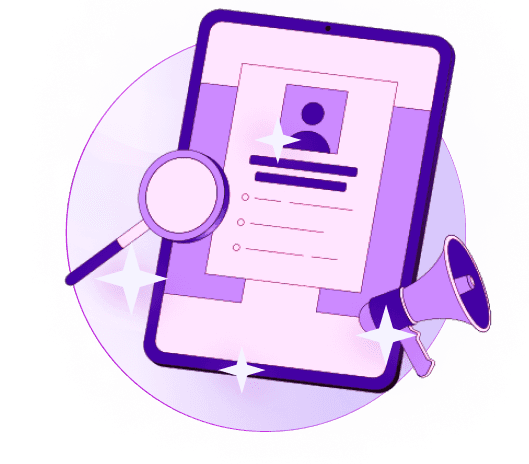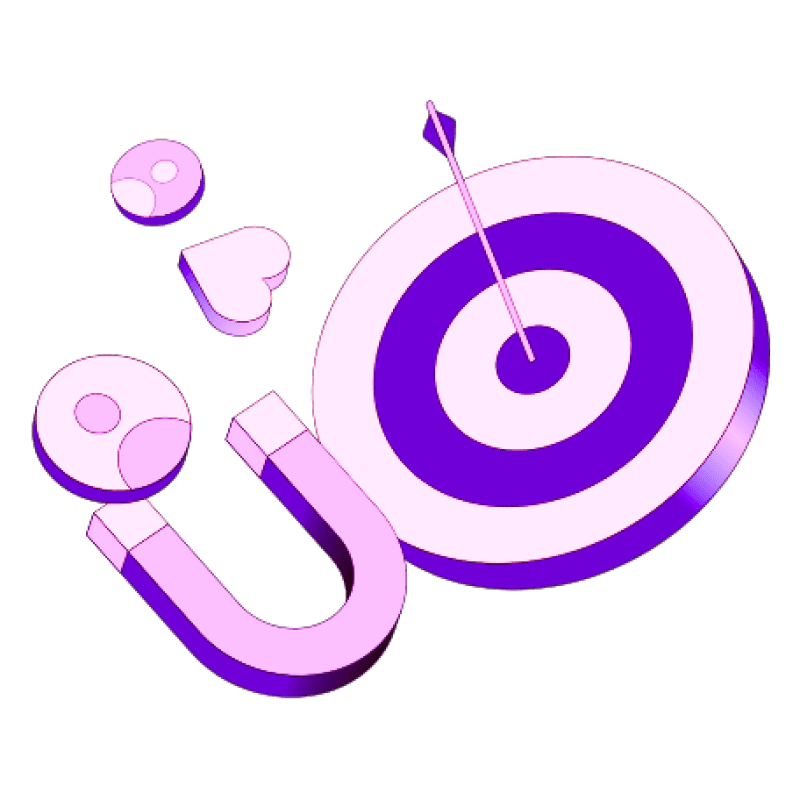Blogs
Articles

Integrating Waterfall Enrichment with CRM for Better Data Accuracy
Did you know that 30% of B2B contact data goes stale every year? Your business needs accurate data, and that's why integrating waterfall enrichment with CRM systems has become crucial.
Sales reps waste 21% of their time due to poor data quality - that's a full workday each week. The results are striking when companies implement CRM data enrichment through a waterfall approach. Companies using enriched CRM data generate 44% more Sales Qualified Leads compared to those without.
This piece will show you why CRM data often fails without enrichment. You'll learn how waterfall enrichment fills these gaps and the practical steps to integrate this powerful approach into your existing systems.
Why CRM Data often fails without enrichment?
Businesses depend on customer data to make decisions, but CRM systems only work as well as their data quality. Research shows that customer data becomes invalid at a rate of 6.5% each month due to turnover. This rapid decay creates many challenges that hurt your sales and marketing results.
Common issues in CRM data quality
Poor data quality can destroy the foundations of any CRM strategy. Most organizations work with marketing and prospect data that's 20%-40% inaccurate. On top of that, 75% of executives say they can't trust their data quality. This lack of trust comes from several ongoing problems.
Databases suffer from duplicate records that split customer information into multiple entries and ruin the single customer view. Blind spots appear from incomplete data - missing phone numbers, job titles, or contact details that you need for successful outreach. Data becomes hard to analyze when it's formatted differently, especially when it comes from multiple sources.
Your once-valuable database loses relevance without regular updates. People change addresses, switch jobs, and companies transform over time.
Impact of bad data on sales and marketing
Poor CRM data hurts your entire organization. Sales teams lose more than a day each week by chasing bad data - about 27.3% of their time. Bad data costs organizations $15 million yearly on average. About 44% of businesses lose over 10% of their annual revenue because of flawed CRM information.
Marketing takes a hit too. Campaigns fail when emails bounce and contact details don't match. Eight out of 10 companies say dirty data hurts their lead generation campaigns. Data quality problems result in wrong sales strategies, incorrect forecasting, and fewer repeat customers.
Signs your CRM needs enrichment
Your CRM might need data enrichment if you notice:
Email campaigns have high bounce rates and outreach attempts fail
Sales teams keep reporting wrong contact information
Conversion rates drop despite spending more on marketing
Customers complain about getting duplicate or irrelevant messages
You can't segment your audience properly for targeted campaigns
These problems get worse as data quality drops. The biggest concern is that 30% of companies have no plan to fix inaccurate or incomplete data. This lets problems grow bigger over time.
How Waterfall Enrichment solves CRM data gaps?
Waterfall enrichment solves the biggest problem of incomplete CRM data. Traditional single-source enrichment falls short, but this method uses multiple data providers in sequence to fill significant information gaps.
Sequential enrichment logic explained
The word "waterfall" captures how this process works - data flows through vendors like water cascading down steps. A simple sequential logic makes it work:
Your system begins with incomplete contact information (missing email, phone, etc.)
The primary data provider checks this information first
A second provider steps in if gaps remain
This cycle continues until fields are complete or all vendors have tried
Your data gets a safety net when one tool falls short and another captures the needed information. Clay's platform connects with over 75 data providers. You can select exactly what information you need without managing multiple accounts.
Higher match rates through multiple sources?
Numbers tell the story clearly. Standard enrichment achieves only 50-60% match rates. Waterfall enrichment expands these numbers to 80-90% or higher. Some companies see email match rates up to 93%. Their overall match rates improve from 60% to over 90%.
Each data provider's unique database information creates this dramatic improvement. A recent enrichment test showed:
Provider A filled ~58% of leads
Provider B added another 26%
Provider C completed the remaining 10%
Final result: 94% complete profiles with no manual input
Real-life examples of waterfall success
Business results show waterfall enrichment's substantial effects. Companies see revenue increases of more than 45% without changing their product, pricing, or conversion rates. Persana.ai gives specialized consultation on implementation options to learn about how waterfall enrichment might improve your specific CRM system.
The affordable pricing makes it even more appealing. Most waterfall systems use a pay-for-success model – you pay only when a vendor enriches a data field successfully. Sales teams spend less time on the "Great Data Hunt" looking for contact information.
Integrating Waterfall Enrichment into Your CRM System
The right strategic planning helps realize the full potential of waterfall enrichment. Your success depends on picking suitable tools and creating proper workflows that line up with your CRM environment.
Choosing tools that support waterfall logic
The best enrichment solutions connect to multiple data vendors at once. Look for platforms that provide continuous CRM connection to populate prospect data automatically. Systems should confirm contact information before updating your database. Several platforms like LeadDelta follow this approach and help professionals find verified contact details with just a LinkedIn URL.
Setting up enrichment schedules and triggers
Your system needs automated triggers to work efficiently. Modern tools support immediate enrichment that starts right when new data enters your CRM. You can also schedule regular enrichment jobs to update existing records at specific times—weekly or monthly based on your data decay rate. The best results come from automatic enrichment that runs during key events like form submissions or status changes.
Ensuring compliance with GDPR and CCPA
Privacy regulations must be followed when implementing enrichment. GDPR and CCPA require enterprises to store personal data only as long as needed. You need resilient consent management with opt-out options and privacy flags at the contact level. Persana provides specialized consultation services to help you stay compliant with your specific integration needs.
Using enrichment to improve lead scoring and routing
Enriched data changes how you qualify and distribute leads. Your routing logic should connect directly to enriched fields. High-value prospects get assigned to the right representatives based on company size, revenue, or technology stack. Smart lead enrichment queues route contacts automatically using predefined criteria. This method reduces manual checks and boosts lead grading and conversion rates.
Future-Proofing Your CRM with Continuous Enrichment
Your CRM health depends on continuous data quality maintenance, not quick fixes. The data enrichment market shows strong growth potential, expected to rise from $2.58 billion in 2024 to $2.90 billion in 2025, with a 12.6% annual increase.
Setting up ongoing data validation
B2B contact databases become stale and unreliable faster without regular monitoring. Your business requirements should determine the frequency of scheduled refreshes - monthly, quarterly, or yearly. Data validation processes that run automatically can spot outdated information right away. This saves time while your data stays reliable.
Persana provides specialized consultation services to create complete validation strategies that match your CRM setup.
Using AI and machine learning for smarter enrichment
AI-powered enrichment shapes CRM data management's future, with 75% of companies planning to adopt these solutions. These systems cut data cleaning time by up to 70% by automating routine tasks like cleansing and standardization. AI systems scan online sources continuously and update your records automatically. Machine learning algorithms analyze patterns in big datasets to predict customer behavior and suggest effective actions for sales teams.
Scaling enrichment as your business grows
Your enrichment strategy must grow with your organization. A framework that adapts to emerging technologies and new data sources will serve you well. Smart businesses choose enrichment tools with flexible pricing that fits changing needs. The best results come when enrichment processes blend into all workflows, benefiting every department.
Conclusion
Data quality is the foundation of every successful CRM implementation. Waterfall enrichment turns incomplete, inaccurate CRM data into a valuable business asset. This approach doesn't just improve match rates from 50-60% to 80-90% - it reshapes the scene for sales and marketing teams.
Waterfall enrichment tackles the expensive problem of data decay head-on. B2B contact data typically becomes useless at a rate of 30% each year. Now we can keep data accurate through sequential provider checks. This method will give a way to capture vital information that single-provider solutions don't catch.
The results speak for themselves. Companies that use enriched CRM data generate 44% more Sales Qualified Leads than their competitors. They also deliver up to 45% more revenue without changing products or pricing. Sales teams get back a full workday each week they used to waste chasing bad data.
Setting up waterfall enrichment takes smart implementation. You'll need to pick tools that support multiple vendors, set up enrichment schedules, follow regulations, and link enrichment to lead scoring systems. The original setup needs planning but pays off big time.
Key Takeaways
Waterfall enrichment transforms CRM data accuracy by using multiple providers sequentially, boosting match rates from 50-60% to 80-90% and helping companies generate 44% more qualified leads.
• Poor CRM data costs businesses significantly - 30% of B2B contact data goes stale yearly, wasting 21% of sales reps' time and costing organizations an average of $15 million annually.
• Waterfall enrichment delivers superior results - Sequential data provider logic achieves 80-90% match rates compared to 50-60% from single sources, with some implementations reaching 93% accuracy.
• Revenue impact is substantial - Companies with enriched CRM data can deliver up to 45% more revenue without changing products, pricing, or conversion rates.
• Implementation requires strategic planning - Choose tools supporting multiple vendors, set up automated triggers, ensure GDPR/CCPA compliance, and connect enrichment to lead scoring systems.
• Continuous enrichment is essential - AI-powered validation and machine learning will become standard practice, reducing data cleaning time by 70% while maintaining real-time accuracy.

Create Your Free Persana Account Today
Join 5000+ GTM leaders who are using Persana for their outbound needs.
How Persana increases your sales results
One of the most effective ways to ensure sales cycle consistency is by using AI-driven automation. A solution like Persana, and its AI SDR - Nia, helps you streamline significant parts of your sales process, including prospecting, outreach personalization, and follow-up.



